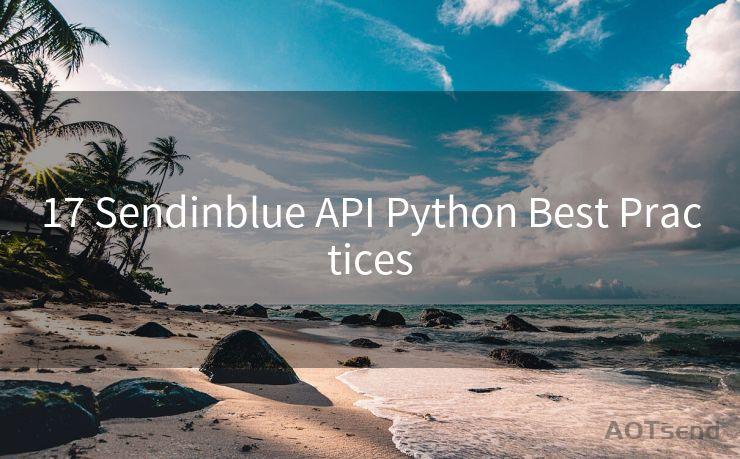17 Sendinblue API Python Best Practices




1. Introduction
When integrating the Sendinblue API into your Python project, it's essential to follow best practices to ensure efficient, secure, and reliable communication. Sendinblue's API offers a powerful way to manage email marketing, transactional emails, and SMS campaigns, but to fully utilize its capabilities, you need to adhere to certain guidelines. Here are 17 best practices for using the Sendinblue API with Python.
2. Understand the API Basics
Before diving into the code, familiarize yourself with the Sendinblue API documentation. Understand the available endpoints, request methods, and required parameters. This knowledge will help you avoid common pitfalls and make the most of the API's features.
3. Set Up Your Environment
Ensure your Python environment is properly configured with the necessary libraries. Install the Sendinblue Python client library using pip to simplify API interactions.
4. Authenticate Securely
Always use secure methods for authentication, such as OAuth or API keys. Keep your credentials safe and never hardcode them into your application.
5. Error Handling
Implement robust error handling mechanisms to catch and manage exceptions gracefully. Use try-except blocks to handle potential API errors and provide meaningful feedback to the user.

6. Rate Limiting
Be aware of Sendinblue's rate limits and adjust your code accordingly. Implement logic to handle rate limit exceptions and avoid exceeding the allowed request frequency.
7. Optimize Requests
Minimize the number of API calls by batching requests when possible. This not only reduces the chance of hitting rate limits but also improves efficiency.
8. Use Pagination
When fetching large datasets, utilize pagination to avoid memory issues and improve performance.
9. Validate Data
Before sending data to the API, validate it to ensure it meets Sendinblue's requirements. This helps avoid unnecessary errors and reduces the chance of your requests being rejected.
10. Testing in a Sandbox Environment
Utilize Sendinblue's sandbox environment for testing purposes. This allows you to experiment without affecting your live data.
11. Monitoring and Logging
Implement monitoring and logging mechanisms to track API usage, errors, and performance. This helps identify and troubleshoot issues quickly.
12. Secure Data Transmission
Ensure all data transmitted to and from the API is encrypted using HTTPS to maintain security.
13. Caching
Consider implementing caching mechanisms for frequently accessed data to reduce the number of API calls and improve performance.
14. Keep Up to Date
Regularly check for updates to the Sendinblue API and adjust your code accordingly. APIs are constantly evolving, and staying up to date ensures compatibility and optimal performance.
15. Use Asynchronous Programming
For high-volume applications, consider using asynchronous programming techniques to handle concurrent API requests efficiently.
🔔🔔🔔
【AOTsend Email API】:AOTsend is a Managed Email Service for sending transactional emails. Support Email Types: reminders, authentication, confirmations, notifications, verification codes, invoices, password resets, account activations, billing statements, two-factor authentication (2FA), and one-time passwords (OTP) emails, etc. $0.28 per 1000 Emails. 99% Delivery, 98% Inbox Rate.
You might be interested in:
Why did we start the AOTsend project, Brand Story?
What is a Managed Email API, How it Works?
Best 25+ Email Marketing Platforms (Authority,Keywords&Traffic Comparison)
Best 24+ Email Marketing Service (Price, Pros&Cons Comparison)
Email APIs vs SMTP: How they Works, Any Difference?
16. Follow REST Principles
Adhere to RESTful principles when designing your application's interaction with the API. This ensures a clean, consistent, and scalable architecture.
17. Contact Support
If you encounter any issues or have questions about the API, don't hesitate to contact Sendinblue's support team. They are a valuable resource for troubleshooting and best practices.
By following these best practices, you can ensure a smooth and efficient integration of the Sendinblue API into your Python project. Remember to always refer to the official documentation and stay up to date with any changes to the API.




Scan the QR code to access on your mobile device.
Copyright notice: This article is published by AotSend. Reproduction requires attribution.
Article Link:https://www.mailwot.com/p2169.html



